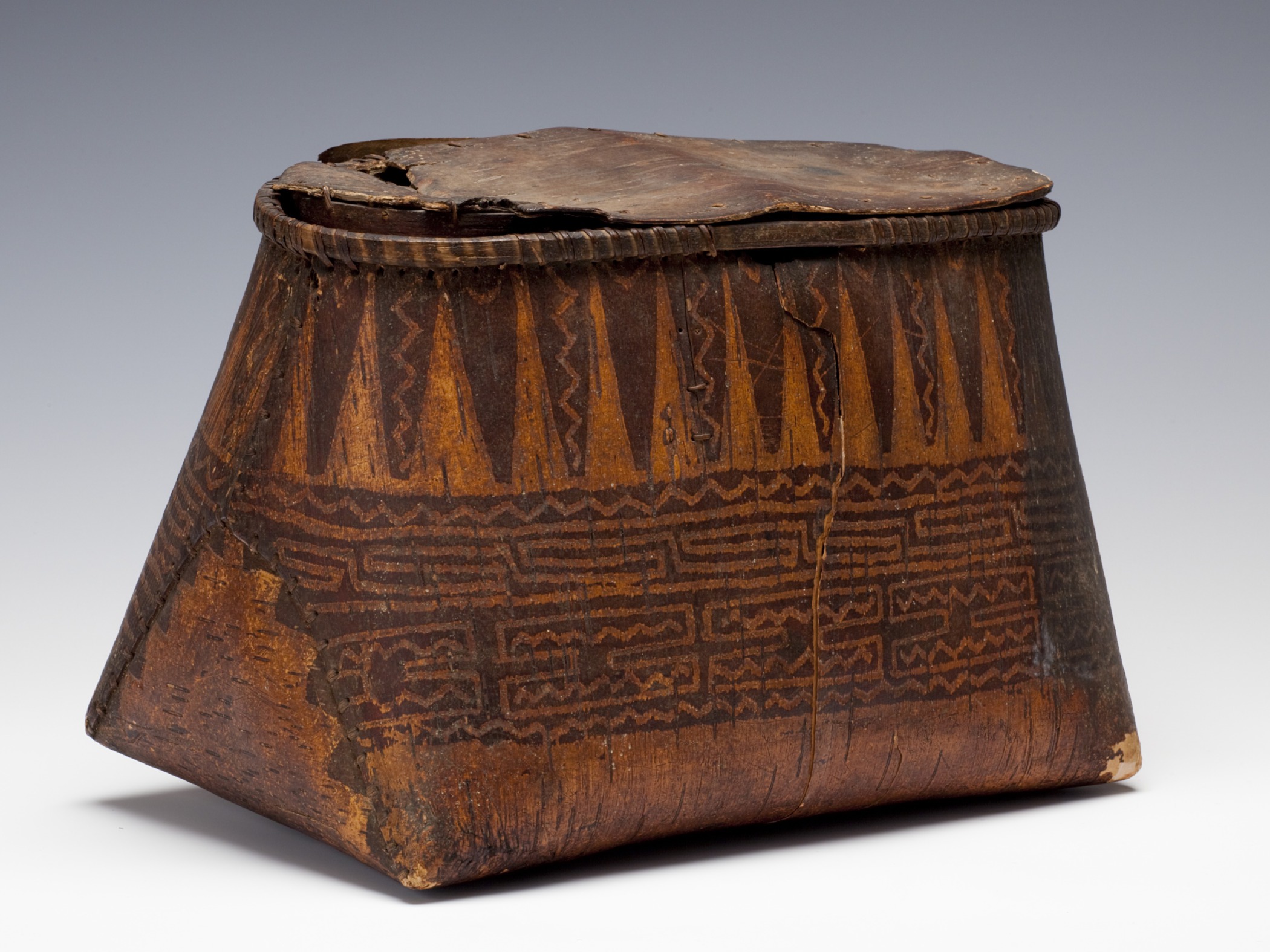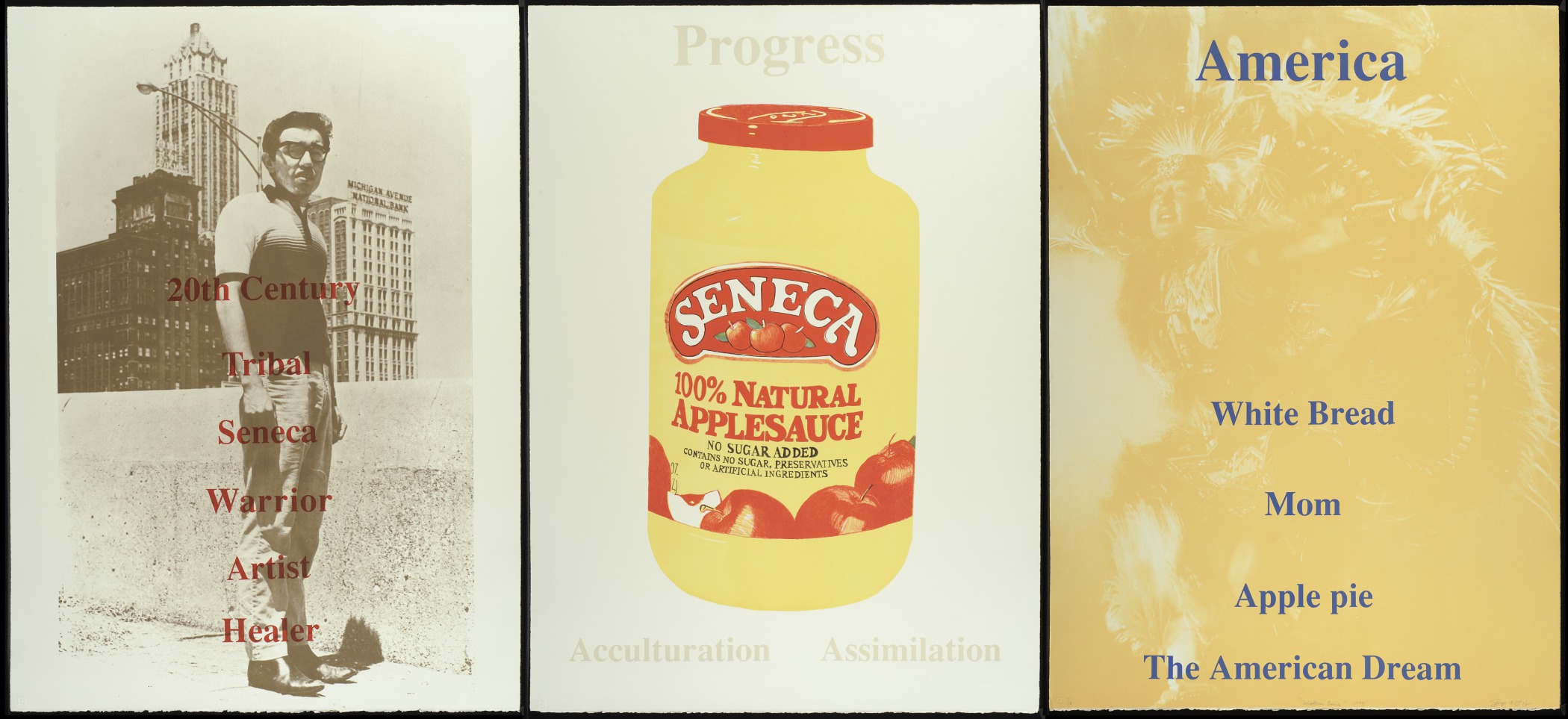George C. Longfish, American (Seneca/Tuscarora [Haudenosaunee (Iroquois)]),
born 1942
Modern Times
- 1994
- Triptych; color lithograph on Arches 88 paper
- 41 1/2 × 30 in.
Hood Museum of Art, Dartmouth College: Purchased through the Class of 1935 Memorial Fund; 2008.41.5
visibilityLook & DiscussIn Modern Times, artist George Longfish challenges the viewer to think about the construction of Native American identity in the context of American history, symbols, stereotypes, and branding. This color lithograph, a type of print, is a triptych, a work in three sections.
Explore the object
In the first panel of the triptych Modern Times, George Longfish creates an image of the artist as a 20th-century man, a multifaceted human being, proud of his heritage, far from the stereotyped images of Indians from the past.
By placing himself on a rooftop in a modern city, he also draws our attention to the role of Haudenosaunee people in the building of many of America’s skyscrapers and bridges.
In the second image, Longfish examines the use of Indian identity in the service of commercial branding. He asks us to question the simplicity of stereotypes and confront a more complex and painful American history that forced assimilation on native people.
In the final image, behind a set of words associated with mainstream white American culture, he presents a proud, defiant, image of Native American culture and spirituality that endures.
Joseph Sanchez, A’aninin (Ah-AH-ni-nin) (Gros Ventre) curator and historian of Native American art, wrote this about George Longfish’s lithograph:
Modern Times juxtaposes an image of the artist as a twentieth-century man—relieved of the burden of the stereotypical Indian but still carrying all of his power as a healer and warrior-artist—with American mainstream symbols of acculturation and assimilation. The meaning of these symbols is different for America’s Native people than for the immigrant, whose fantasy of being “American” revolves around the assimilation of American values. George Longfish questions this “truth” and demands a real representation of Native history and stories accompanied by respect and understanding for Native cultural heritage in a triptych that is modern in appearance but traditional in content.
Meet the Artist
George Longfish was raised on the Iroquois Indian reservation in Ontario, Canada, before moving to Chicago, Illinois. He received his BA and MA at the Art Institute of Chicago, where he studied painting, sculpture, film, and printmaking. He served as a professor in the Native American Studies Department at the University of California, Davis, for 30 years while also organizing or exhibiting work in more than 200 exhibitions. He now lives and works in Maine. He has said, “Historically, many of the images of Native American life have been distorted and documented with prejudice… The images I create are meant to question the stereotypical romantic image of Native People so often portrayed in past as well as current media” (New Art of the West 7, Eiteljorg Museum, 2000).
Learn More
The brochure from the exhibition Booming Out: Mohawk Ironworkers Build New York, created by the National Museum of the American Indian, documents six generations of Mohawk ironworkers from two native communities.





